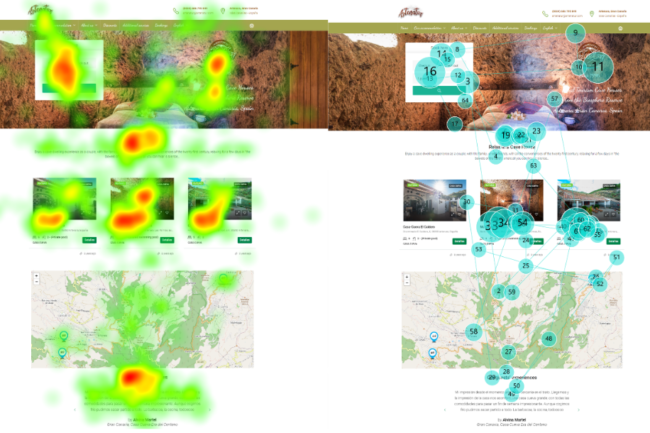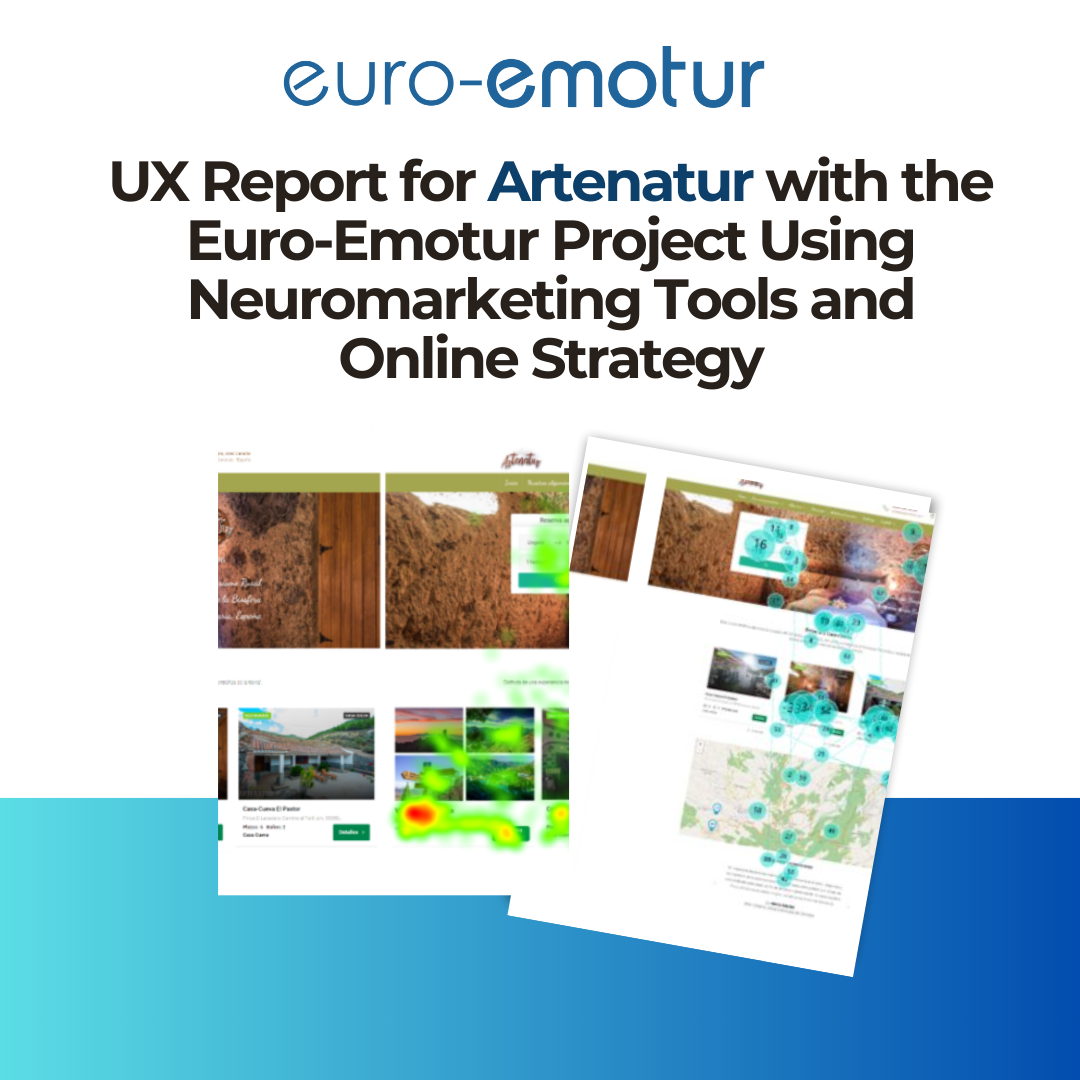Artenatur is one of the service providers for Euroemotur Digital Hub. The company offers a diverse selection of rural tourism accommodations in Gran Canaria, specifically managing cave houses equipped with all amenities. Additionally, Artenatur provides extra services, such as breakfasts and airport transfers, making it an excellent option for travelers seeking a unique and authentic experience in Gran Canaria.Artenatur aims to attract foreign tourists through its website, particularly for weekday bookings, to increase its sales. Moreover, the company seeks to automate the sales process to save time on calls and enhance brand recognition, positioning itself as a reliable, well-established, high-quality, authentic, and approachable option.To achieve these objectives and by being part of the Euro-emotur Hub, Artenatur received a comprehensive report focused on user experience (UX) analysis using neuromarketing tools and advanced digital marketing strategies. The goal is to help the company optimize user experience on its web platform and social media, increase conversions, and foster customer loyalty.
Project Objectives
- Improve the user experience (UX) on Artenatur’s online platform to facilitate navigation, increase time on site, and boost conversion rates.
- Understand users’ emotions and behaviors through neuromarketing to create more personalized experiences.
- Integrate digital marketing tools to optimize online visibility, improve organic and paid traffic, and strengthen customer relationships.
- Boost Artenatur’s digital presence in its target market, aligning with new trends in digital tourism and service personalization.
Methodology and Tools Used
3.1 Neuromarketing
Through neuromarketing analysis, the emotional response of users interacting with Artenatur’s website was studied. Neuro-scientific analysis tools used included:
- Eye-tracking: The way users view and navigate the website was analyzed, identifying high-attention areas and those that go unnoticed. This analysis allowed for the optimization of key elements like call-to-action (CTA) buttons, images, and text placement.
- Facial emotion analysis: Unconscious emotional responses of users to various visual elements and text were measured, identifying which images or messages generated more positive or negative emotions. This helped to adjust graphic design and storytelling to improve engagement.
The following image illustrates the methodology used in the experimentation with neuromarketing tools:

3.2 Online Strategy
Various digital marketing tools were integrated to improve the visibility and effectiveness of Artenatur’s campaigns:

- SEO analysis and optimization: A thorough SEO audit was conducted to improve the website’s organic ranking. This included optimizing specific keywords related to experiential tourism, art, and local culture, along with improvements in site architecture for better search engine indexing.
- Content marketing: Recommendations for a content marketing strategy were created to attract tourists interested in local culture by producing blog articles, videos, and guides on art and culture in the areas covered by Artenatur. This SEO-optimized content helped improve organic traffic.
- Competitive analysis and benchmarking: A detailed competitive analysis was conducted to understand the digital strategies of other companies in the sector. This allowed Artenatur to adjust its value proposition and highlight its differences from competitors.
3.3 User Experience (UX) Tools
In addition to neuromarketing, specific UX tools were used to measure and optimize user interaction:
- Usability testing: Usability tests with real users were conducted to identify obstacles in web navigation, purchasing flows, and platform registrations. The results allowed for the simplification of processes and made the platform more intuitive.
- User behavior analysis (Google Analytics and Search Console): Detailed tracking of key metrics such as bounce rate, time on page, pages per session, and conversion funnels was performed. This analysis revealed weak points in user experience and elements needing urgent improvements.
Results
The results from the study using Neuromarketing tools, especially eye-tracking, were analyzed in two blocks. One focused on the usability of Artenatur’s website (block 1) and the other on the attention to various integrated elements (block 2).
Below are different heatmaps and gaze plots from Artenatur’s website.
- Heatmaps: These heatmaps display the areas of the page where users focused their attention or clicked most frequently, with more intense colors indicating higher activity zones. This helps identify which elements of the page capture more interest, enabling analysis of user behavior and design optimization.
- Gaze plots: These graphics illustrate the visual path users take on the page, showing the order and direction in which they viewed different elements. This type of visualization aids in understanding how users navigate and what catches their attention first, supporting content layout improvements.


Conclusion
